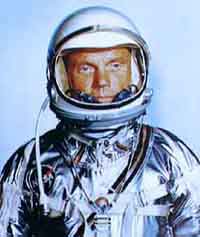
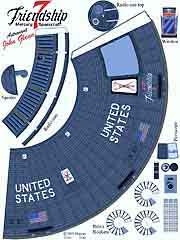
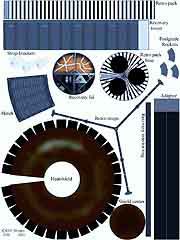
Astronaut John Glenn's Friendship 7 Mercury Capsule
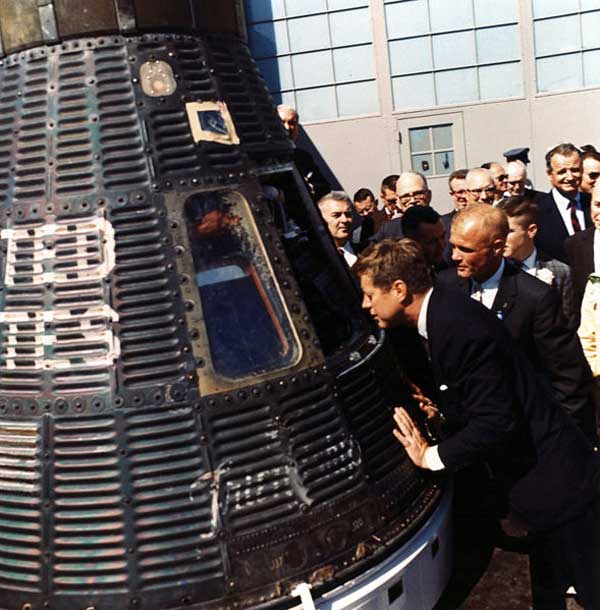
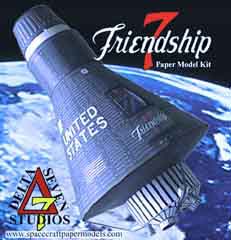
A wonderful model with easy to follow instructions for the new Space enthusiast. Great little school show and tell project!!! and for just three bucks downloaded.
This is Dan Shippey's brilliant Friendship 7 Mercury Capsule with a John Glenn cutout. He's generously given Fiddlers Green permission to include it in our Jets and Aero Space Collection.
He's gone pretty deeply into the subject designing the entire Mercury series and offers them on a collector's CD The Redstone Mercury Launcher Rocket is offered free from his site: http://www.spacecraftmodels.com/
Project Mercury began on October 7, 1958, one year and three days after the Soviet Union launched Sputnik 1 and was the United States' first manned space program.
The objectives of the program, which was made up of six manned flights from 1961 to 1963, were specific: 1) to orbit a manned spacecraft around Earth, 2) to investigate man's ability to function in space and 3) to recover both man and spacecraft safely. However, three weeks after Alan Shepard's first U.S. human sub orbital flight, on May 5, 1961, and with only 15 minutes of U.S. space flight experience, President John F. Kennedy announced the goal of landing a man on the moon before the end of the decade. Project Mercury was American's first "small steps" toward that "Giant Leap for mankind."
Anthony Sanchez has taken Delta 7's Mercury Capsule model and photographed it properly. He used Photoshop to get the enhancements. He's taking commissions. Keep him in mind, why don't you...(elsancho@home.com)
Mercury Capsule and Launch Vehicle
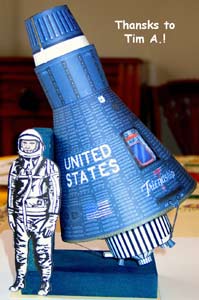
The National Aeronautics and Space Administration was formed on Oct. 1, 1958, and the man in space program was introduced just six days later.
The program was renamed "Project Mercury" by Nov. 26,
1958, just prior to the commencement of the astronaut candidate
selection process. Project Mercury met all three of its objectives:
orbit a manned spacecraft around Earth; learn about man's ability
to function in space; and safely recover the man and spacecraft.
The project ultimately put six men in space, four of whom made
orbital flights around Earth. It proved that men could function
normally for up to 34 hours of weightless flight. Over two million
people worked on the project for almost five years. By 1963, Project
Mercury wrapped up and Project Gemini was two years into its development
stages.
|
|
Selection
Mercury astronaut candidate requirements were strict. NASA required
that all astronauts be male, no older than 40, no taller than
5'11 and in excellent physical condition. They had to have graduated
from test pilot school, be a qualified jet pilot with at least
1,500 flying hours, and have a bachelor's degree or the equivalent
in experience.
NASA officials began with a pool of 508 service records. One hundred and ten of those men met the requirements. This group was further whittled down by physical and psychological testing until just seven men remained. The Mercury Seven were introduced to the public at a press conference in Washington, D.C. on April 9, 1959. They rapidly took on hero status. All of the men except Deke Slayton flew into space on a Mercury flight. Slayton developed a heart problem that later went away, allowing him to fly on the Apollo-Soyuz Test Project mission.
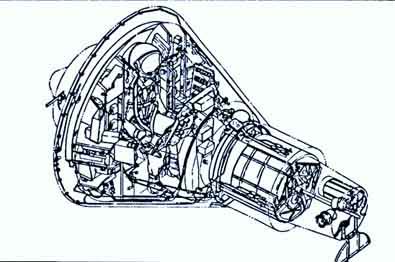
|
The new NASA organization, formed to take over the exploration of space, now needed to put a man in space before the Soviets. The Soviets had already ,beaten them to launching the first satellite, and they ultimately put a man in space before Alan Shepard went up in Mercury. 1. They needed a small spacecraft able to support a single person in the vacuum of space. In order to design it, in 1959, NASA requested to several companies that they submit proposals for the first American space capsule. McDonnell Aircraft Corp. won the contract with a bell shaped capsule just under three meters tall, and two meters in diameter. This capsule had a square hatch in the side, which was barely large enough for the astronaut to squeeze through. Once inside, the astronaut sat in a couch which was specifically designed for him. In front of him was a control panel and two small portholes. (following complaints from the astronaut, later versions of the Mercury capsule and a large rectangular window) also, the assets could view the outside with a retractable telescope.
To control the attitude and velocity (attitude is the direction the capsule is facing) 18 small thrusters could be controlled by the Astronaut's hand, and were also controlled by other control systems for extra safety. Inside the capsule was pure oxygen and one third the pressure at sea level. In case the cabin lost pressure, a spacesuit that the Astronaut war could act as a backup life support system by providing an independent oxygen supply. The capsule itself was made out of a titanium
and nickel alloy, and the heat shield on the bottom was made
from a fiberglass reinforced laminated plastic. Donald Slayton There were seven Astronaut chosen to pilots the Mercury capsules. Six of the 7, all except for Donald K. Slayton and, flew missions in the Mercury capsule. Slayton was grounded because of a heart irregularity. However, he stayed with NASA and eventually convinced NASA officials that his heart irregularity was not a danger. He eventually got to fly on the famous Apollo-Soyuz international docking mission in 1975. Mercury 1: Alan B. Shepard becomes the first man in space On the fifth of May 1961, Mercury 1 was launched. The Redstone rocket which carried it into a sub-orbital flight gave it 15 minutes and 22 seconds in space. The first Astronaut in space, Alan B. Shepard, reached a peak altitude of 185 kilometers in his capsule, Freedom 7. Although Shepard was the first American in space, he was not be first person in space. He was beaten by the Soviet Yuri Gagarin. Mercury 2, or Liberty Bell 7, flew on the twenty-first
of July 1962. Mercury 3: Glenn orbits the Earth On the thirteenth of September 1961, an unmanned capsule made the first orbital flight of the Mercury spacecraft. This successful test lead to Mercury 3, which Colonel John Glenn flew. On this 5 hour flight, he flew an orbit 160 kilometers by 261 kilometers across. Whenever his craft emerged from he dark side of the Earth, Glenn observed a strange aura of thousands of tiny luminous particles surrounding his ship. These were later found to be particles released from the capsule, reflecting light from the sun. Like Mercury 2, Mercury 3 (also known as friendship 7) had a dramatic ending. It started when ground controllers suspected that the heat shield of the craft was loose. If it broke off during reentry, the Mercury capsule would be destroyed. To prevent this, a retrorocket pack that was attached to the heat shield was made to stay in place. By this, they hoped that the straps holding the retrorocket pack would also hold the heat shield on. After a dramatic landing, with flaming debris flying test plans window during reentry, the capsule was undamaged.
After Glenn's flight of Mercury 3, there were three more missions of the Mercury spacecraft. The first was Mercury 4, or Aurora 7, flown by Malcolm Scott Carpenter on the twenty-fourth of May 1962. Because of extensive maneuvers in orbit, Mercury 4 became dangerously low on fuel and landed 350 kilometers off target. Mercury 5 was flown on the third of October 1962 by Walter M. Schirra aboard sigma 7. The final Mercury flight was flown by L Gordon Cooper on the fifteenth of May 1963. Although one more mission was planned, NASA decided to terminate it in favor of the Gemini project. In the beginning of the 60's, Mankind had not yet put anybody in space. In less than a decade, in 1969, man would be on the moon with Apollo. In that decade, we went from a planet trapped on Earth by gravity, to a planet with the capability of interplanetary travel. |

Spacecraft
Each Mercury capsule was named by the astronaut who flew in it. The "7" added to the end of each name was intended to suggest the teamwork of the astronaut group. The astronauts flew solo in cone-shaped capsules. The capsules were two meters long and 1.9 meters wide. A cylinder was mounted to the top of each capsule with a 5.8-meter escape tower attached to it. Heat shields protected the capsule and astronaut from the 3,000 degree Fahrenheit reentry.
Two launch vehicles were used during the Mercury Project. A Redstone rocket launched the MR-3 and MR-4 sub orbital flights, and an Atlas rocket was used for the remaining four orbital flights. The missions steadily increased in duration from 15 minutes and 22 seconds to 34 hours, 19 minutes and 49 seconds.
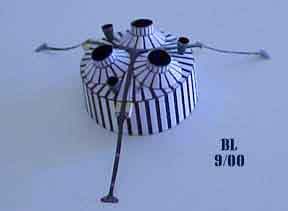
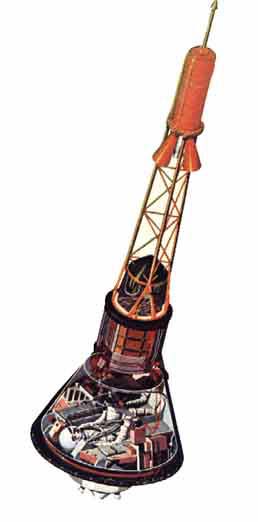
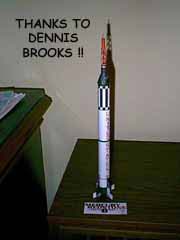 |
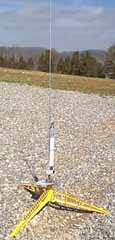 Modeler Dennis Brooks sent us these photos saying: Here is the Delta 7 Studios Mercury Redstone 8 in 1/96th scale with an Estes rocket motor conversion. Next, a Bachem Nadder or maybe the X-1. |
|
I soak the paper in a penetrating epoxy after printing. It has a consistency similar to playing cards and is very durable. Also much stronger. I have over 200 launches on some of my Estes rockets. I have taught elementary, secondary and college classes over the last ten years. I have also built a number of display rockets for Estes. One was used to launch an American flag at the National Scout Jamboree. The flag was between the parachute and rocket and unfurled perfectly at ejection and on the way down. . Dennis |
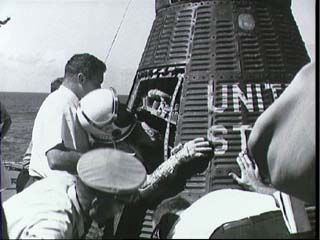



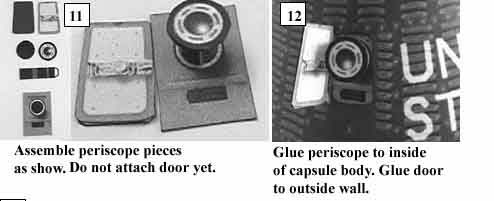 This
is a group of photos to help with the construction of the periscope
This
is a group of photos to help with the construction of the periscope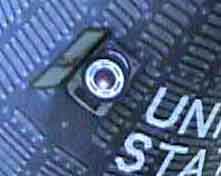 .
. 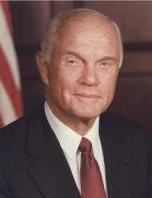
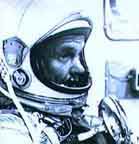 This heat shield was designed to emulate,
or charge, to absorb the heat during reentry the. The Mercury
capsule was designed to be launched using either a Redstone or
Atlas rocket, although an orbital flight could only be performed
using the more powerful Atlas rocket.
This heat shield was designed to emulate,
or charge, to absorb the heat during reentry the. The Mercury
capsule was designed to be launched using either a Redstone or
Atlas rocket, although an orbital flight could only be performed
using the more powerful Atlas rocket.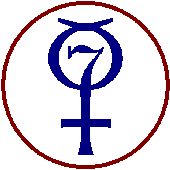 Virgil Grissom piloted this sub orbital flight. This was the
first manned mission in space to involve unexpected danger, because
after the capsule landed, the explosive bolts blew the hatch
open for no apparent reason. Water rushed immediately into the
capsule, which quickly sank. Although Grissom escaped, his space
suit was weighed down with water and he was unable to swim. A
helicopter was able to eventually rescue Grissom, the capsule
could not be recovered.
Virgil Grissom piloted this sub orbital flight. This was the
first manned mission in space to involve unexpected danger, because
after the capsule landed, the explosive bolts blew the hatch
open for no apparent reason. Water rushed immediately into the
capsule, which quickly sank. Although Grissom escaped, his space
suit was weighed down with water and he was unable to swim. A
helicopter was able to eventually rescue Grissom, the capsule
could not be recovered.